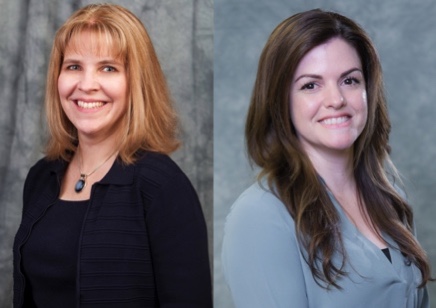ATSU-ASHS professors receive grant for pelvic health program
Posted: June 14, 2020
Two A.T. Still University-Arizona School of Health Sciences’ (ATSU-ASHS) professors recently received notice they had been awarded a grant from the Women for ATSU organization. The grant will go toward the purchase of biofeedback equipment for the ATSU Center for Occupational & Physical Therapy. The grant was awarded to Pamela Kays, DPT, assistant professor and Tammy Roehling, PT, DPT, director of transitional doctor of physical therapy, associate professor, for their contributions to a unique therapy program.
ATSU Center for Occupational & Physical Therapy offers pro-bono services to the community and it provides student doctors opportunities to perform occupational and physical therapy (PT) treatments under the supervision of department faculty and staff.
The therapy offered at the clinic by Drs. Kays and Roehling is a pelvic floor health program, which is specialized and not offered in many clinics throughout Arizona. Patients will typically seek treatment when they have pelvic floor dysfunction, urinary or fecal incontinence, pelvic pain, or pelvic organ prolapse.
While pelvic floor PT may be recommended for patients, unfortunately, it is not always covered by insurance. One of the major health insurance providers in Arizona will only cover certain types of incontinence issues for women, and they do not cover incontinence for men, nor do they cover pelvic pain for anyone. Many patients would need to pay out of pocket, if not for the ATSU clinic.
The biofeedback equipment needed for this program was not a standard item at the clinic. In order to offer this service, Drs. Kays and Roehling had to borrow the equipment from a local private practice and were only able to offer the service on Tuesday nights, leading to a waitlist of patients. As the borrowed equipment started to show signs of aging and began to malfunction, Drs. Kays and Roehling knew they needed to do something to secure their own equipment and decided to apply for the grant.
“Biofeedback, it gives us more information as practitioners, but also the patient gets to see on a computer screen what their muscles are doing,” Dr. Roehling said. “People don’t have proper awareness and they don’t know if they are doing the exercises correctly. So now, they can see it for themselves.”
“From their muscle activity, it projects onto a graph and you can see as the muscle squeezes, the graph goes up, and as the muscle relaxes, the graph goes down,” Dr. Kays said. “In the moment, they visually see it on the screen, so it helps reinforce what they are learning.”
In order to keep the field of pelvic health therapy alive, students need opportunities to learn, yet pelvic exams were not traditionally part of PT curriculum. At ATSU, pelvic floor PT is now part of the curriculum and hands-on learning can take place at the ATSU Center for Occupational & Physical Therapy.
“Students can be a part of the clinic and actually see what a pelvic floor looks like on a menopausal woman, what a prolapse looks like. It’s really cool that they actually get to see that in the clinic,” Dr. Roehling said. “We have a lot of pelvic floor therapists come out of ATSU because of how much we focus on this.”
Once the biofeedback equipment arrives, the team will be able to offer pelvic floor physical therapy on a regular basis, and will have more opportunities to educate the community on this type of physical therapy.
“I really just want to show the scope of what can be done and what we have available to us. I really want to be able to show the community what pelvic physical therapy is,” Dr. Kays said. “They think of PT and going to an orthopedic clinic, and most people can picture what that means. Since this is not familiar to people, I just want to represent it to the best capacity so they can see what it can do for them.”